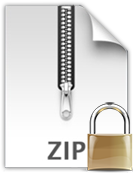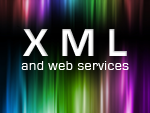 IBM i (AS/400, iSeries) users send a lot of sensitive information to their customers, vendors, and employees which needs to be protected with strong encryption. Our customers today are using our PGP encryption solution to protect files. But there has been a big need to generate and protect information in common PC formats. With our managed file transfer solution, Alliance FTP Manager for IBM i, we stepped up our support with encrypted Zip files and encrypted PDF files.
IBM i (AS/400, iSeries) users send a lot of sensitive information to their customers, vendors, and employees which needs to be protected with strong encryption. Our customers today are using our PGP encryption solution to protect files. But there has been a big need to generate and protect information in common PC formats. With our managed file transfer solution, Alliance FTP Manager for IBM i, we stepped up our support with encrypted Zip files and encrypted PDF files.
Zip compression is very commonly used to send files via email. Not only does Zip compression make our email attachments smaller, but the most popular Zip compression programs now support 256-bit AES encryption of the contents. The ability to encrypt Zip files with AES provides a much better level of security than older Zip protection methods. Alliance FTP File Manager for IBM i fully supports Zip encryption to the WinZip standard. This means that you can create and protect Zip files on your IBM i platform, and then use a variety of delivery methods to get the Zip files in the hands of your customers, vendors, and employees. This functionality gives IBM i customers a powerful tool to meet compliance regulations.
Encrypted Zip support in Alliance FTP Manager provides rich capabilities to IBM i users. You can create encrypted or un-encrypted Zip archives, include sub-directories, and use wild cards to select files. When uncompressing and decrypting, you can specify any directory as the target for the files. This capability integrates with our automation facilities for processing received files. Lastly, we provide a Windows command line Zip application to help our customers who don’t already have a Zip application. I’m confident that this capability will help customers achieve a better level of security.
Another security technology in FTP Manager for IBM i is our encrypted PDF support. In this implementation, our customers are able to create encrypted PDFs with their own content, and then use the automation facilities to distribute the PDFs via email, FTP, and other distribution methods. Encrypted PDF support includes the ability to set fonts and colors, embed watermark and graphic images, set headers and footers, and create tables and lists. The resulting encrypted PDF file is compatible with any PDF reader that supports the AES encryption standard for PDF. We’ve tested with a wide variety of PDF readers on PCs, Apple Macs, Blackberry, Linux desktops, and so forth. This gives our customers an additional tool to secure their sensitive data.
These technologies for the IBM i customer increases their abilities to meet compliance regulations and secure sensitive data. I hope you get the idea that we are dedicated to helping you protect your sensitive data and corporate assets. You are going to see a lot more of these types of capabilities as we go forward. For more information on our managed file transfer solution, view our webcast "Secure Managed File Transfers on the IBM i."
Topics: Alliance FTP Manager, Managed File Transfer, Secure Managed File Transfer, ZIP, FTP Manager for IBM i, secure communications, Webinar
Gaining Efficiency & Business with XML & Web Services - Part 1
XML and web services are tools that can help your organization respond faster to opportunities, win more business, and reduce costs. Recently I was able to sit down with Patrick Townsend, Founder and CTO of Townsend Security, to discuss XML & web services. One thing became crystal clear – using XML and web services does NOT have to be a hard project, in fact it can be relatively easy.
How can XML and Web Services improve an organization’s bottom line?
 |
| View Recorded Webinar Now |
XML and web services are really designed to help make integration within an organization and between organizations a lot easier. This technology is designed for the Internet and is an easy to implement integration strategy. Companies can begin putting applications together within the organization and then start to work to integrate with their customers and service providers. XML and web services makes business a lot easier to do. And XML is a great technology for making this happen very quickly. XML is a very light-weight technology, easy to implement, and very platform agnostic. So anyone, with the right set of tools, which are not expensive, can begin doing this kind of integration very quickly.
Can you give me a brief overview of how XML and web services work together?
Well, there are several components to web services. The first is you have a communications layer, which is based on HTTP and HTTPS – the same communications technology we have in our browsers on our PCs. So the internet HTTP technology is the backbone of web services. Communications are one big chunk of what web services are all about.
Next you have data that you are pushing between a client and a server, or between yourself and a customer. This payload is usually in XML format -- which is again, an industry standard well adapted for the Internet.
Then you typically have client and server backend processes. If I send an order to a customer over the internet in XML format, there needs to be a backend process that can receive that XML document, process it into the back-end order system, and properly handle the data.
So these are the fundamental components – communications, XML payload, and processing capability on both ends – that really make web services go.
What essential components would an organization need?
Since most of the web services are automated, you need a good client application and a good server communications application. Where as you are browsing on your PC with Internet Explorer or Firefox, you are using a pre-packaged client going to a web server. In web services between businesses, the client is usually an application, so you need some kind of client application capability that can perform the communications automatically. In other words, there is not a human being there who is going to initiate a browser session. It is going to be an automated process. Likewise, on the receiving end, or the server end of the process, you need a server capable of receiving an XML web services request and invoking the backend application. And almost always that means something that can parse an XML payload and make that information useable within the backend application.
What can you tell us about Townsend Security’s XML product?
Alliance XML/400 is an IBM i solution and it provides all of the components that a customer needs to really deploy web services on the IBM i platform. It provides the communications transport – both the client and the server side, it provides the ability to form XML documents out of standard database information, and it provides easy mapping so that complex programming is not required. It gives the IBM i enterprise customer that ability to easily and quickly deploy web services and take advantage of the technology.
This concludes part one of Gaining Efficiency & Business with XML & Web Services. We will post the second half at the beginning of next week. Until then, we have made a recording of our webinar "XML & Web Services - How to Win More Business" available for further information.
Topics: web services, XML, secure communications


